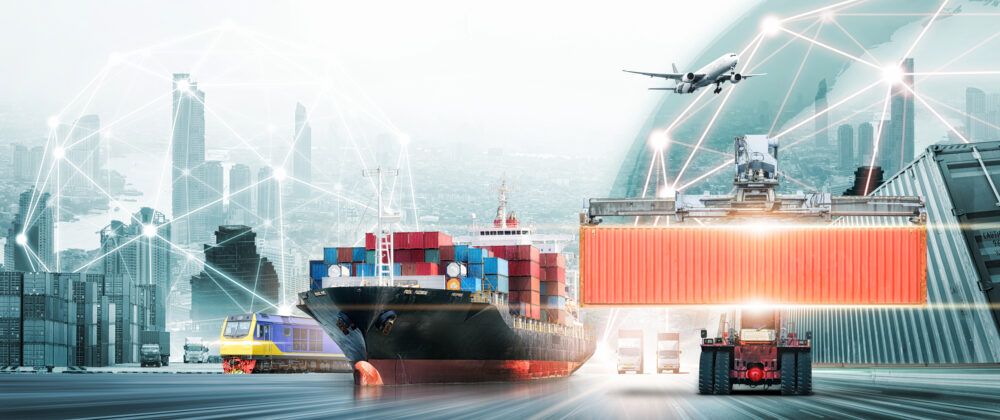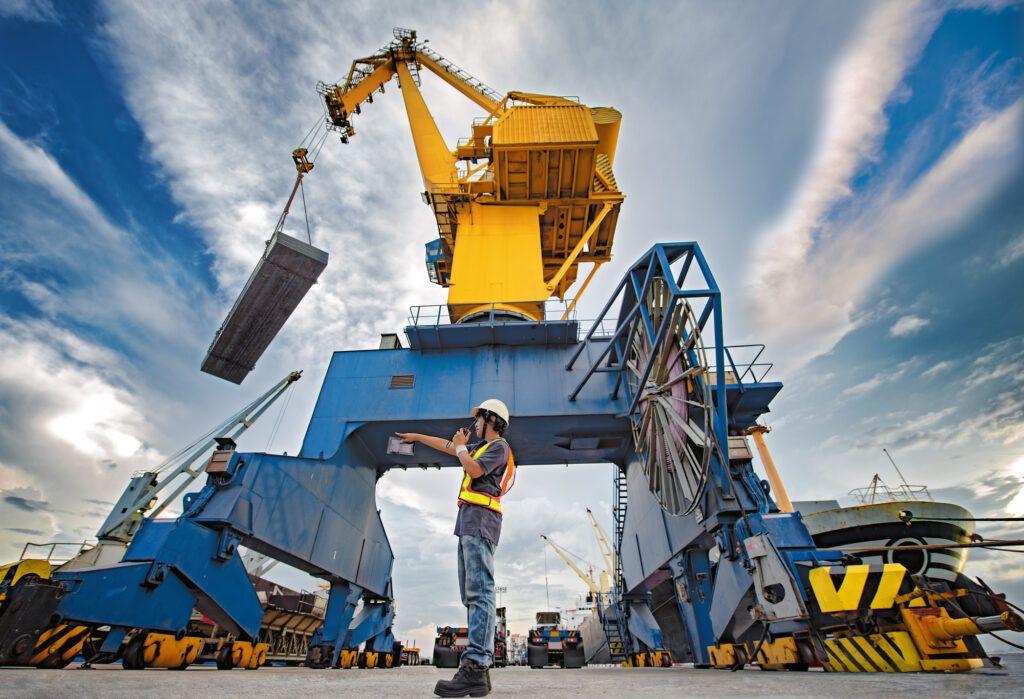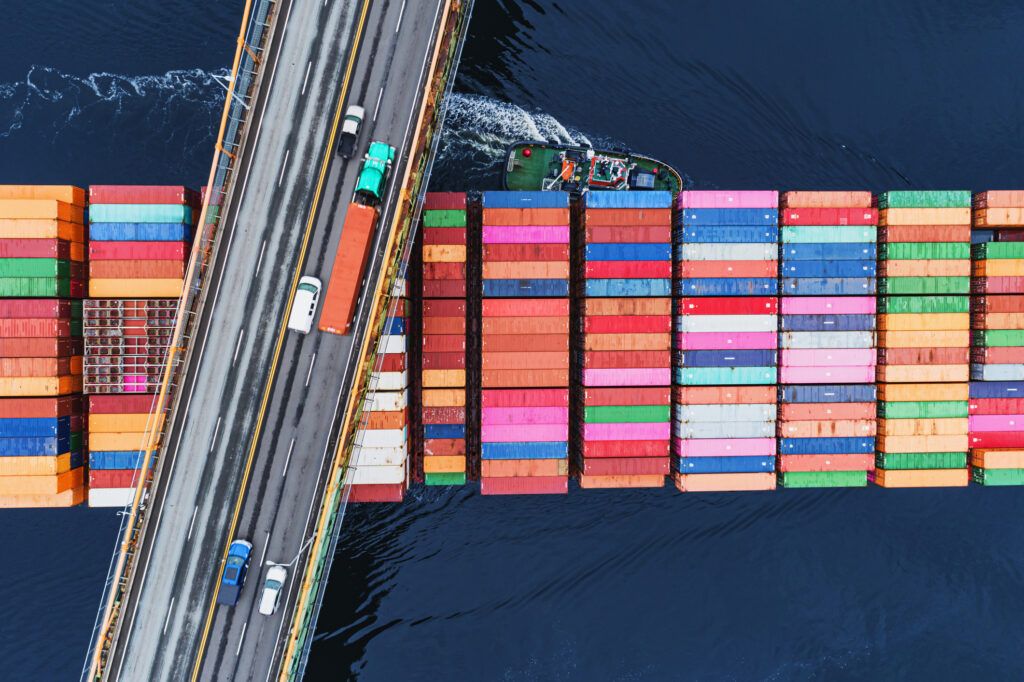 Throughout the 21st century, global supply chains have demonstrated an exemplary resilience, adaptability and flexibility. Recent events call into question this optimistic view. (GettyImages)
Throughout the 21st century, global supply chains have demonstrated an exemplary resilience, adaptability and flexibility. Recent events call into question this optimistic view. (GettyImages)
Disruptions in the logistics chain: the perfect storm?
When the Covid-19 pandemic broke out, leading voices from the economic and logistics sector predicted the collapse of supply chains. Supermarket shelves would be empty and industries left without components and raw materials. Customers swept supermarkets and bought large quantities of basic products, starting with toilet paper. Despite compulsive shopping and widespread fear, what was predicted did not end up happening. But now... it may be different.

Jordi Torrent is the Strategy Manager at Port de Barcelona.
 Throughout the 21st century, global supply chains have demonstrated an exemplary resilience, adaptability and flexibility. Recent events call into question this optimistic view. (GettyImages)
Throughout the 21st century, global supply chains have demonstrated an exemplary resilience, adaptability and flexibility. Recent events call into question this optimistic view. (GettyImages)
The paradoxes of the new normal
Consumers and industries continued to function with a relative normality after strict confinements were overcome. The global economy was even able to provide sufficient masks for the majority of the world's population in just a few weeks. The global logistics and supply chains showed throughout 2020, even in the worst and most dramatic moments of the pandemic, their resilience and flexibility.
The same had happened in other critical global periods of this century, such as the disruptions in the logistics chains caused by the financial crisis of 2008, the September 11, 2001 attacks, the wars in Iraq and Afghanistan and the cyberattacks that have affected especially global maritime operators.
Throughout the 21st century, global supply chains have demonstrated exemplary resilience, adaptability and flexibility. In fact, to find the latest serious impacts on global supply chains, we would probably have to go back to the 1973 oil crisis and the 1956 Sinai war.
Contrary to some catastrophic forecasts, during the second half of the 20th century and the first two decades of the 21st century, logistics has withstood pandemics, wars, extreme weather events and massive cyber attacks quite successfully. Globalization and the relocation of production in Asia, especially China, but also in North Africa, Eastern Europe or Mexico, in the case of the United States, have not led to supply problems, except at specific times.
The perfect Storm
However, in 2021 the time to challenge this optimistic view has come. Since the beginning of the year, global logistics chains have been immersed in a range of disruptions that this time have put their reliability and adaptability in crisis. Some analysts say that we are facing the perfect storm.
Some of these disruptions are related to the pandemic and others with short-term and structural issues in supply chains that are difficult to resolve. Some are a direct consequence of the loss of reliability of logistics chains and the concentration of the production of certain products in a few places and their inability to reach global markets. We start with the latter.
Shipowners are implementing price containment policies. Also, are progressively increasing capacity as demonstrated by the massive purchase of container ships
Limited production and distribution capacity
The best known case is the brutal impact that the lack of semiconductors is causing in the automotive industry. As is well known, the vast majority of semiconductors used by the electronics and automotive industries are produced in Taiwan and, to a lesser extent, in South Korea.
The exorbitant increase in demand for these components by the electronics industry as a consequence, among other factors, of teleworking, has limited or exhausted the production and distribution capacity of chipmakers for other industries, especially the automotive. This is forcing the production and assembly lines to stop, such as the Seat factory in Martorell.
To a lesser extent, there have also been supply problems for certain industries as a result of political conflicts such as the coups d'état in Myanmar and Guinea. This has affected clothing imports from factories in the Asian country and minerals such as bauxite from the African country, which is the world's leading producer.

The problems associated with the difficulties of producing certain products and exporting them to consumers or industries that need them (semiconductors, garments, bauxite, etc.) have been aggravated and multiplied to the rest of the industries and economic sectors of the planet due to the alterations of supply chains, and specifically of maritime transport, occurred in 2021.
Some of the alterations or disruptions have their origin in the Covid-19 pandemic (blank sailings) and others, in the very structure of the sector and the maritime industry.
The big question is: will shipping’s supply issues be solved and freight prices go down?
Demand grows but supply is limited
Demand has grown strongly when most countries have eliminated most pandemic-related restrictions and a part of the population has decided to spend and invest part of the resources saved during the confinement months.
The increase in demand has been met with a limited maritime supply, since, as we know, maritime transport takes time to react because the ability to increase supply is directly related to the introduction of more transport (more ships, more shifts, more services, more rotations).
In addition, maritime transport between Asia and the rest of the world, and especially with Europe, is the responsibility of few and massive agents who share means of transport, so that the market supply is hardly diversified.
The situation has worsened even more as a result of other specific episodes that occurred in 2021, such as the total blockade of some terminals in the Port of Yantian and Ningbo as a result of sporadic outbreaks of Covid-19 in the cities that host these ports and due to the Suez Canal blockade in March.
In addition, throughout the first semester of 2021 the reliability of the stopovers (compliance with the expected arrival time of the ships) has worsened significantly, which has further complicated the planning and organization of small and large industries, distributors and small and medium-sized companies.
The limited increase in maritime transport demand and supply has led to an extraordinary rise in maritime freight rates that have multiplied by four and by five the levels prior to the pandemic, causing a substantial increase in supply chains’ costs. As a result, some companies and industries have seen their financial viability seriously threatened.

The increase in prices, the lack of supply, the call’s loss of reliability, the collapse in the Californian ports where, at the precise moment when I am writing these lines, there are some sixty container ships waiting to be unloaded, have caused serious supply problems that make some companies and analysts doubt that they can meet consumer demand at Christmas.
In western countries, the situation has been further aggravated by the chronic shortage of truck drivers, especially severe in the UK. There, the combination of all these disruptions with Brexit is showing unseen images of empty shelves in supermarkets and kilometer-long queues at gas stations to fill up the tanks.
And now that?
Some industries have reacted by increasing the use of air and rail transport between China and Europe. Other companies, mainly European from the fashion sector, have brought part of their production to Mediterranean countries such as Turkey. Also, to deal with the problem of semiconductors, there are very advanced plans to create factories in Europe to supply the industry.
In the United States, many companies plan to repatriate part of their production according to recent surveys answered by the CEOs of large companies. Will these forecasts really come true? It depends on the ability of global logistics chains, especially maritime one, to return to pre-pandemic prices and service levels.
The big question, then, is whether the supply issue in maritime transport will be solved and freight prices will fall. In the short term it is difficult. Predictably, according to several analysts, they should in the medium term.
On the one hand, demand should gradually stabilize in the coming months. On the other hand, as stated by the shipowners, price containment policies are being implemented and capacity is also progressively increasing, as evidenced by the massive purchase of container ships by some of the main shipping companies that supply the Asia-Europe route.
Nevertheless, what seems inevitable is that logistics communities and their customers will have to adapt to a world in which disruptions to logistics chains will be frequent and global. The best way to deal with them is, unfortunately, with a great deal of patience, a lot of flexibility, and where possible, diversifying suppliers, geographical origins and destinations, and means of transport.





